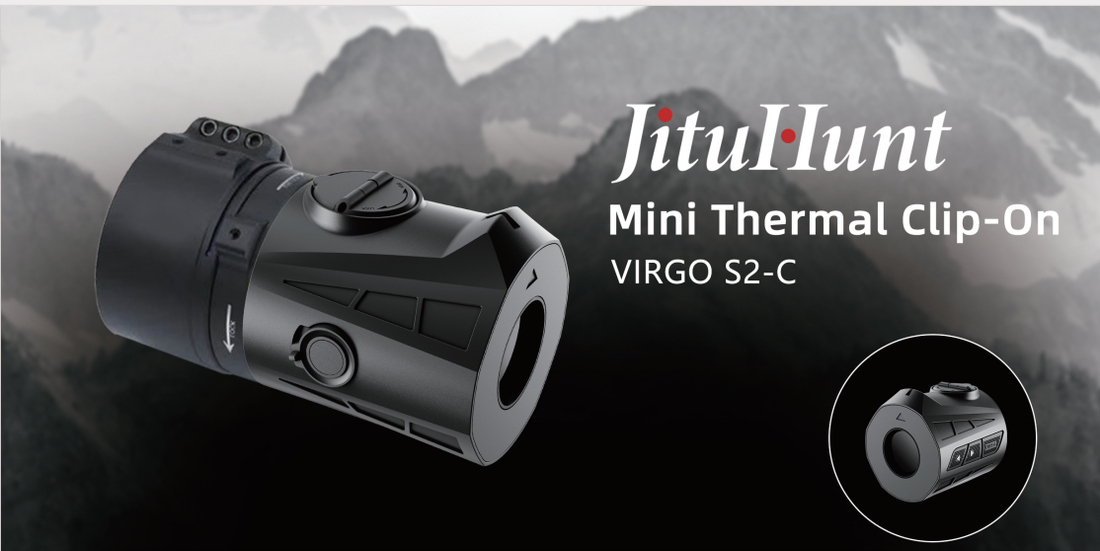
The Rising Demand for Thermal Scopes and Thermal Monoculars
Share
In recent years, the market for thermal scopes and thermal monoculars has been experiencing a remarkable upsurge in demand. This growth can be attributed to a confluence of factors, ranging from technological advancements to an expanding array of applications across diverse sectors.
Market Growth Overview
The global market for thermal scopes and thermal monoculars has been on an upward trajectory. For instance, the clip - on thermal scope market, valued at 5.63 Bn in 2025, is expected to grow at a CAGR of 16.98% from 2026 to 2033, reaching 14.43 Bn by 2033. Similarly, the thermal monocular market is also witnessing steady growth. These figures clearly indicate a burgeoning market with substantial potential for further expansion.
Such as Jituhunt Thermal Scope OS25,OX35, OP50, Clip-on OS25-C, Mini Scope virgo S2 and virgo S2-C. Thermal monocular S2Pro, Thermal monocular S3
Applications Driving the Demand
Surveillance and Security
One of the primary sectors fueling the demand for thermal scopes and monoculars is surveillance and security. In an era where security threats are becoming increasingly complex, these devices offer a significant advantage. Thermal imaging technology enables the detection of heat signatures, allowing security personnel to identify intruders or potential threats even in complete darkness, through fog, smoke, or other obscuring conditions. Law enforcement agencies around the world are increasingly adopting thermal scopes for patrols, border security, and anti - crime operations. For example, in border control, thermal monoculars can help guards detect unauthorized border crossings, as the heat signatures of human bodies stand out clearly against the cooler background.
Hunting and Outdoor Recreation
The hunting and outdoor recreation segment has also contributed significantly to the rising demand. Hunters find thermal scopes and monoculars invaluable as they can spot game animals more easily, regardless of the lighting conditions or the presence of camouflage. Thermal imaging can penetrate foliage, making it possible to detect animals hiding in dense underbrush. Additionally, for outdoor enthusiasts engaged in activities such as wildlife observation, search and rescue operations, or hiking in remote areas, thermal monoculars provide an extra layer of safety and awareness. They can help locate lost hikers, identify potential hazards like wild animals, or navigate through unfamiliar terrains at night.
Military Applications
The military has long been a major user of thermal imaging technology. Thermal scopes for weapons are crucial for enhancing the accuracy and effectiveness of soldiers in combat situations. Devices like the Pulsar Thermion XM50 and Teledyne Technologies Inc.'s Breach thermal monocular offer superior image quality and quick target acquisition in challenging conditions. Their wireless connectivity enables seamless integration with other systems, enhancing situational awareness and reducing risks. As military modernization initiatives continue across the globe, the demand for advanced thermal scopes and monoculars with high - definition imaging, longer detection ranges, and enhanced durability is expected to remain strong.
Technological Advancements Fueling Growth
Advancements in thermal imaging technology have been a key driver behind the increasing demand for these products. Higher resolution sensors are now being incorporated into thermal scopes and monoculars, providing clearer and more detailed images. Image stabilization features have also been improved, allowing for steadier viewing, especially when the user is in motion. Additionally, the integration of smart features such as ballistic calculators, rangefinders, video recording, and wireless connectivity into thermal imaging rifle scopes enhances user experience, data sharing, and mission capabilities. For example, some thermal monoculars now come with Wi - Fi hotspots, enabling users to share the images or videos they capture in real - time with their team or for further analysis.
Conclusion
In conclusion, the demand for thermal scopes and thermal monoculars is on the rise, driven by their diverse applications in surveillance, hunting, military, and other sectors, as well as continuous technological advancements. As these devices become more affordable, compact, and feature - rich, their adoption is likely to spread even further across different user segments. Market players are expected to continue innovating to meet the evolving needs of consumers, further fueling the growth of this dynamic market in the coming years.
